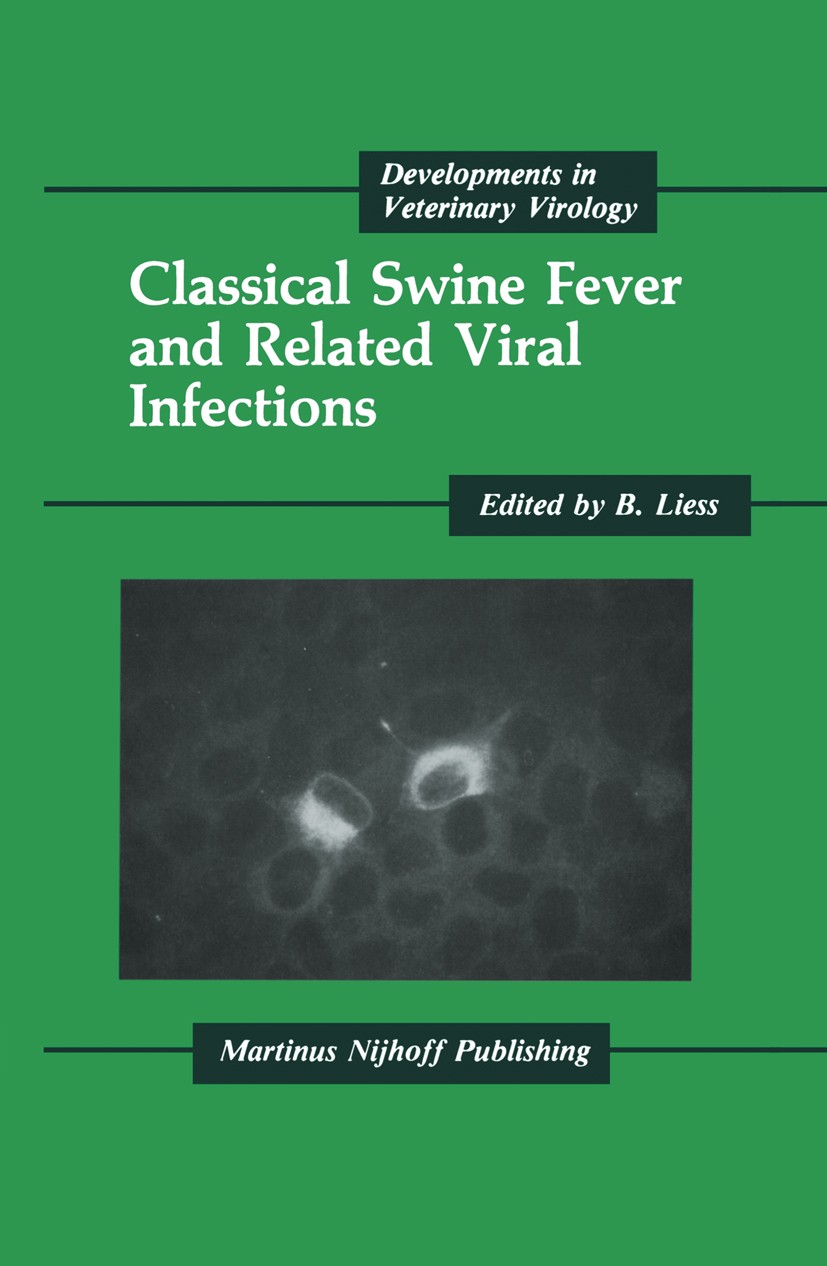| 书目名称 | Classical Swine Fever and Related Viral Infections |
| 编辑 | B. Liess |
| 视频video | http://file.papertrans.cn/228/227133/227133.mp4 |
| 丛书名称 | Developments in Veterinary Virology |
| 图书封面 |  |
| 描述 | The history of research on hog cholera (HC)/classical swine fever (CSF) can be roughly divided into three phases which are characterized by the methods available at the time for demonstrati ng the causati ve agent. Phase covered the period before the viral etiology of HC was discovered by de Schweinitz and Dorset (1904)*. Thereafter (Phase II) the detection of HC virus (HCV) was accomplished by laborious, time-consuming and costly pig inoculation experiments. This explains the extensive search for methods not only for detection but also for accurate infectivity titration as well as for applicable serological techniques to solve urgent problems concerning the pathogenesis, diagnosis, epidemiology and prophylaxis of HC. It was not before the late fifties that HC research entered Phase III when fluorescent antibody techniques offered not only the means for detection and titration of HCV in porcine cell cultures but also for more intensive research on hog cholera and its virus. And yet, there are a number of questions to be answered, e. g. on the genetic and antigenic relation of HCV to bovine viral diarrhea (BVD) virus. There are indications that Phase IV of HC research will bear the |
| 出版日期 | Book 1988 |
| 关键词 | antibody; biology; development; epidemiology; immune response; immunity; infection; molecular biology; morph |
| 版次 | 1 |
| doi | https://doi.org/10.1007/978-1-4613-2083-8 |
| isbn_softcover | 978-1-4612-9235-7 |
| isbn_ebook | 978-1-4613-2083-8Series ISSN 0924-5359 |
| issn_series | 0924-5359 |
| copyright | Martinus Nijhoff Publishing, Boston 1988 |
 |Archiver|手机版|小黑屋|
派博传思国际
( 京公网安备110108008328)
GMT+8, 2025-11-11 17:18
|Archiver|手机版|小黑屋|
派博传思国际
( 京公网安备110108008328)
GMT+8, 2025-11-11 17:18


